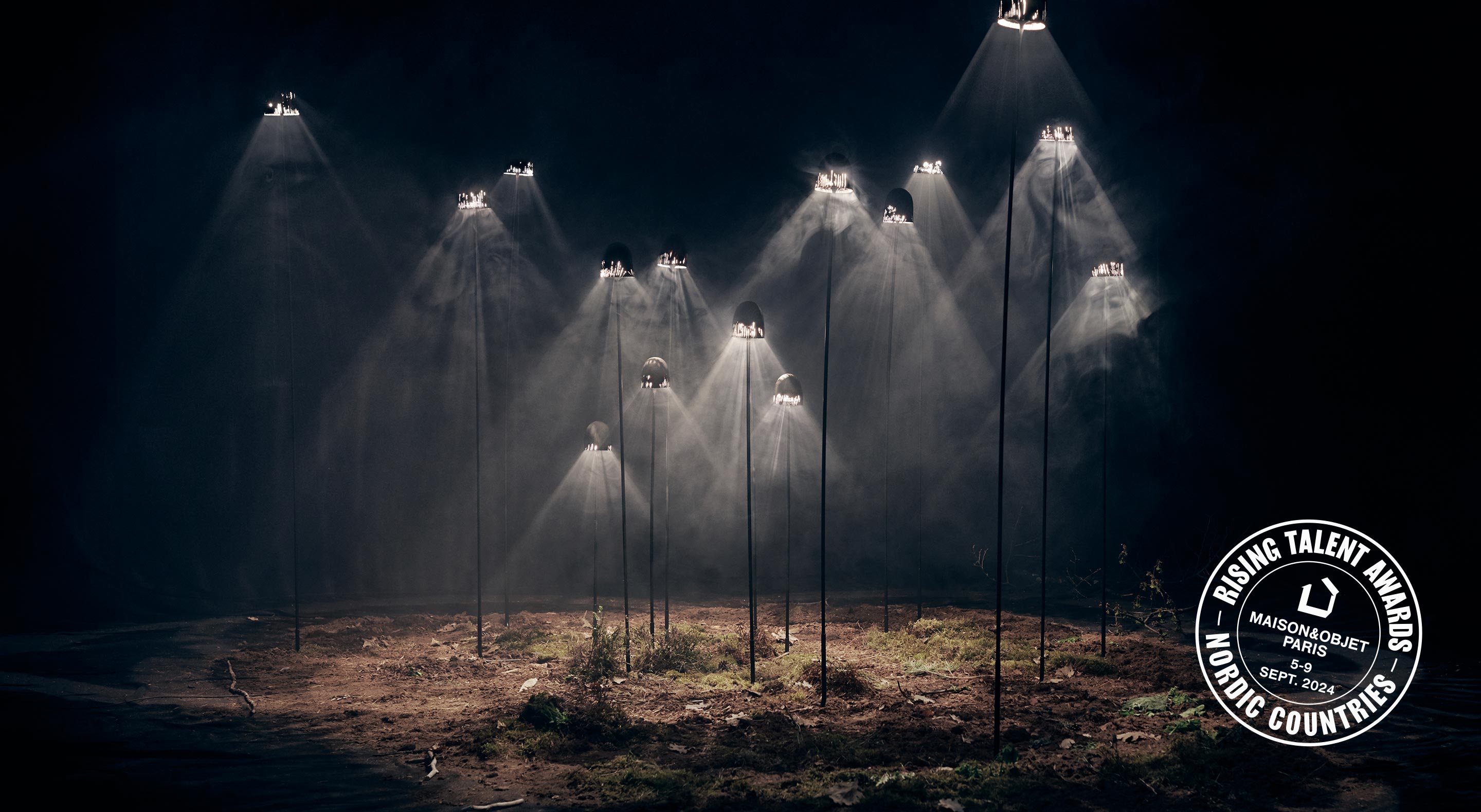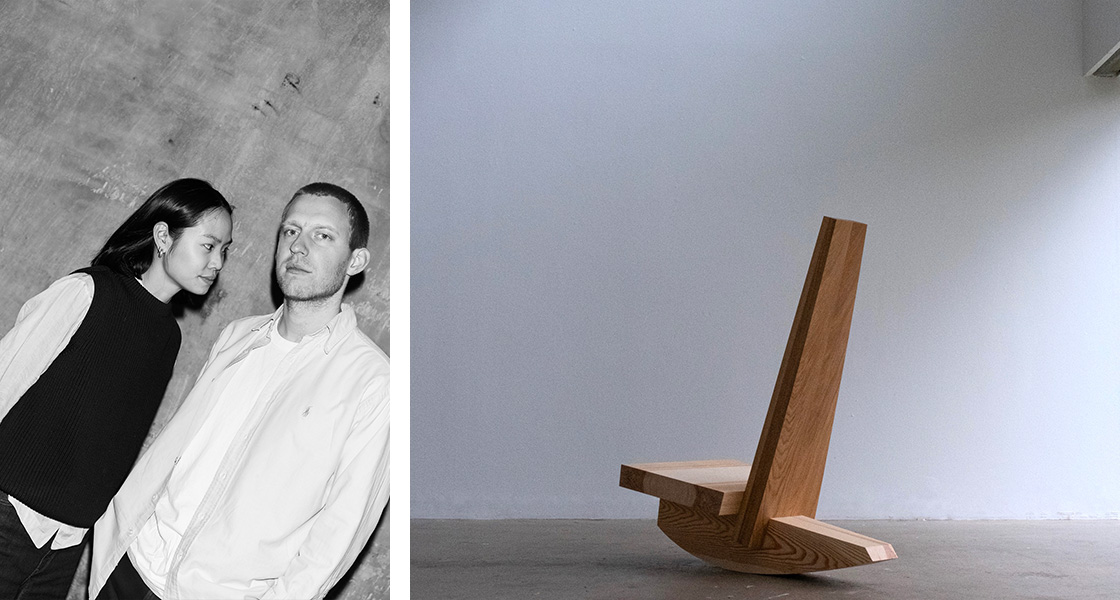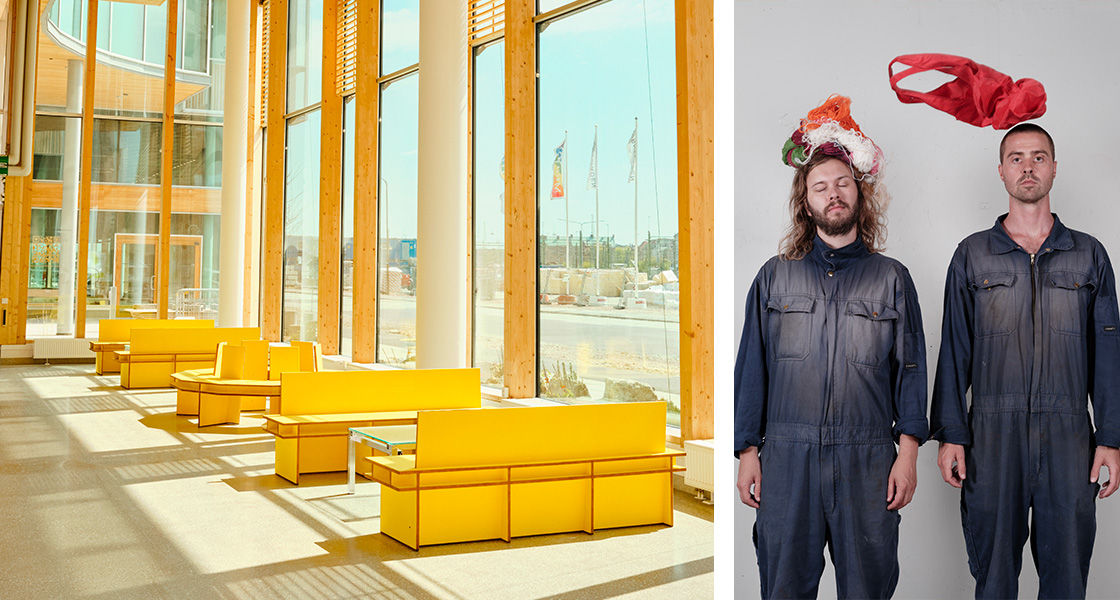Rising Talents Awards: Navigating North!
Published on 3 May 2024

All hailing from the Nordic nations: Sweden, Denmark, Norway, Finland, and Iceland. These laureates, all under 35 years old and who have founded their studios within the last five years, exhibit a vibrant dynamism, supported by a rich history of globally recognized talents and significant craftsmanship.
This year, the Maison&Objet team has set its compass towards the Arctic Circle to select the laureates for the 2024 Rising Talents Awards, all hailing from the Nordic nations: Sweden, Denmark, Norway, Finland, and Iceland. These laureates, all under 35 years old and who have founded their studios within the last five years, exhibit a vibrant dynamism, supported by a rich history of globally recognized talents and significant craftsmanship. Dereen O’Sullivan, head of the Rising Talents Awards for Maison&Objet, notes, “In Northern Europe, there's a different approach to time and natural materials. The young generation is defining a new language, often close to artisanal and Collectible Design.” The jury comprises established talents from each country, including the Franco-Swedish designer duo Färg & Blanche, Danish designer Gesa Hansen, Helsinki-based architect and designer Joanna Laajisto, and Danish architect and designer David Thulstrup. Experts such as Halla Helgadóttir, a graphic design consultant and director of Iceland Design and Architecture, and Cecile Molvær Jørgensen, advisor for Design and Architecture Norway, also contribute. Stéphane Galerneau, president of Ateliers d’Art de France, selected the laureate for the Rising Talent Award for Craft, noting, “We selected a ceramist who straddles the line between craftsmanship and art. She has broken free from traditional values associated with her practice to assert a distinct identity.”
TALENTS HIGHLIGHTS

Christian + Jade
The Philosophy of Material
Christian Hammer Juhl, 33, from Denmark, and Jade Chan, 29, from Singapore, both graduates of the Design Academy Eindhoven, have established their studio in Copenhagen. "The Design Academy Eindhoven doesn't offer an industrial design degree per se but opens our way of thinking," they explain. "When we begin a project, we don't say: we want to make a chair. We observe a material and ask what we can make it express." Indeed, their creations are often mono-material, aiming to explore all its facets. "This piece of wood—where did it grow? What are the properties of this species? That's our starting point," says Christian. "Too often, objects are disconnected from their stories. We focus on rethinking what makes them valuable," continues Jade. While in residence at Schloss Hollenegg Castle in Austria, the duo created a glass fountain that flows into a series of stemmed glasses, using 17 kilograms of sand from the castle's subsoil, owned by the royal family of Liechtenstein, who produce wine. This fountain is intended to share the fruit of this land through glasses made from its sand.

Malin Ida Ericksson
Talent CRAFT - Stopping Time
Malin Ida Ericksson, 31, is a ceramist. She graduated in Art from the University of Gothenburg and then from Bergen in Norway, and completed a master's at the University of Arts in Stockholm (Konstfack). She has established her studio in Stockholm. Born to classical musician parents, she has found her own artistic language in clay work. "My work revolves around the passage of time," she recounts. "When I started my art studies, my grandmother passed away, and this gave me a consciousness of this inevitable escape. Clay is a good way to express this notion—it is malleable, changeable; if you do not bake it, you can still alter it by moistening it; if it goes through the kiln, it will remain fixed forever." Malin Ida Ericksson produces her works during performances as important as the object itself. "It's a way to capture the energy of the present moment. It has to do with my background as a musician; I was part of a choir. After the concert, it is no longer the concert. If you did not see it, you did not participate. The main issue is what is told. My sculptures are just the memory of what happened."

Ali Sha Gallefoss
The Joy of the Unexpected
Ali Sha Gallefoss, 35, grew up in Bergen, Norway. He studied at the Academy of Art and Design before obtaining a master's at the Academy of the Arts in Oslo, where he now lives and works. His form of expression is close to art. "At the time, I saw nothing that inspired me in industrial design. Everything was just reiterations of the golden age of the 60s. Scandinavian design is very well done, very subtle but a bit boring. Why can't we feel the rain, the colors of time, the roughness of the mountains? That's why I turned to a more artistic design. I would like my research to nourish future manufactured productions." Ali Sha Gallefos' work reproduces the subtle movements of nature. That's why he develops techniques to let his raw material express itself almost on its own. "It is alive," he explains. "That's what creates emotion. When you draw too much, you lose something along the way; I like accidents. For example, to create my Sandcasted table, I poured molten aluminum over a sand landscape with reliefs. The metal created its own movements, and in the end, you get a smooth, flat face on top and a face that retains the memory of the sand underneath."

Lab La Bla
Blasting the Process
Axel Landström and Victor Isaksson Pirtti, both 31, grew up in the small town of Luleå near the Arctic Circle in Sweden. Inseparable, they followed the same academic path: the Lorenzo de Medici Institute in Jewelry Art and Design in Florence, followed by a degree in industrial design in Sweden. They live and work in Malmö. Their reflection is based on three pillars: the human, the industry, and the environment. A concern inherited from the contradictions of the terroir where they were born: Luelå is the seat of a major steel mill that supplies a large part of European steel. The nature there is also magnificent. "We are looking for other manufacturing paths. The designer has a great responsibility because he is at the crossroads of the search for raw materials, the way we produce. He thinks about creating a virtuous and sustainable system." For their Prospective Seats project, they observed that this steel conglomerate was conducting surveys in the rock to find mineral deposits. "They extract sediment cores from the depths to be analyzed and then store them," they recount. "We have recovered these cylinders that tell the story of our soil to make seats out of them." The method of this inseparable duo involves playing with a developed sense of the absurd. "Our workshop is our playground. We approach technicians and specialists of all kinds and hack their processes by playing the fools. Something disruptive happens that opens new paths."

Frederik Gustav
Architectural Proportions
Frederik Weber and Gustav Dupont, both 28, met during their studies at the Royal Danish Academy of Design, where they graduated in Furniture Design and then Spatial Design. They live and work in Copenhagen. Their work is primarily inspired by architecture. "Our High Wire installation starts with the observation of the electrical cables seen in the street for public lighting and the antennas on the roofs. These are familiar elements that we no longer see. This network connects people with energy. High Wire is an installation of vertical cables with which one can play on the height of illuminating panels." The public is invited to participate in the experience: "When you touch the lamp, you feel a small electric thrill. Like a danger signal." Even though they break away from their illustrious predecessors, Frederik and Gustav say they are following in their wake. "We follow the tradition of functional and honest Danish design. Even more honest because with us, everything is shown. A classic lamp is a casing in which the wires and mechanisms are hidden. In High Wire, the wires, the attachments, the bulbs are part of the design..."

Antrei Hartikeinen
Capturing Nature in Motion
Antrei Hartikeinen was born in the village of Outokumpu in eastern Finland, where he studied carpentry in college before specializing in cabinetmaking at Salpaus Further Education in the city of Lahti. His workshop is now located in Fiskars in the south of the country. His vocation was born in his father's cabinetmaking workshop, which instilled in him a love of wood in all its dimensions. "I am inhabited by its naturalness," he says. "It never has the same fiber or the same color; it remains always alive, whatever you do with it." At 32, he has already been distinguished as Designer of the Year by Design Forum Finland and Rising Star of the year by the Scandinavian Design Awards. His talent is to express poetically his respect for nature. "In Finland, it changes radically with the seasons. When the snow melts in the spring, new forms are born; I try to freeze this moment in the material. Most often it is wood, but it can also be glass, metal, or ceramic. My Melt vases depict the surface of ice heated by the spring sun. One sees water trickling down; the surface becomes transparent, fluid, and one can see different shades of colors." Antrei masters both the gesture of the hand and the most modern techniques. "I confront the material directly; I sculpt and then return to my drawing table or my computer to adjust the proportions. Afterwards, I use a CNC robotic arm that reproduces the work of my hand. I try to find ways to redo the unique initial piece in series."

Studio Flétta
An Economy of Means
Birt Rós Brynjólfsdóttir and Hrefna Sigurðardóttir, 33 and 34, live and work in Reykjavik, Iceland. Both studied product design at the Iceland Academy of the Arts. They founded Studio Flétta in 2018. During their studies, they embarked on an ambitious project: collecting waste from a hundred companies in Reykjavik with the aim of creating a bank of materials available to other designers. "We collected wool, textiles, wood, glass, a lot of waste from the fishing industry, nets... No one wanted it. So we founded our studio to exploit it ourselves and demonstrate its potential." Whether individuals or businesses, the two young women want to educate their country in the art of recycling. "We collaborate with companies to teach them the long term, so that they manufacture objects that can be kept for a long time, repaired. To consumers, we explain in a simple, understandable, and joyful way that one can create things that bring happiness with waste." Studio Flétta produces cushions made with old car airbags. "The design scene is very young in Iceland. So we are very free. We experiment. Our grandparents mended shirts, made new out of old; they had to be creative. We do the same thing but with the raw materials of the time."